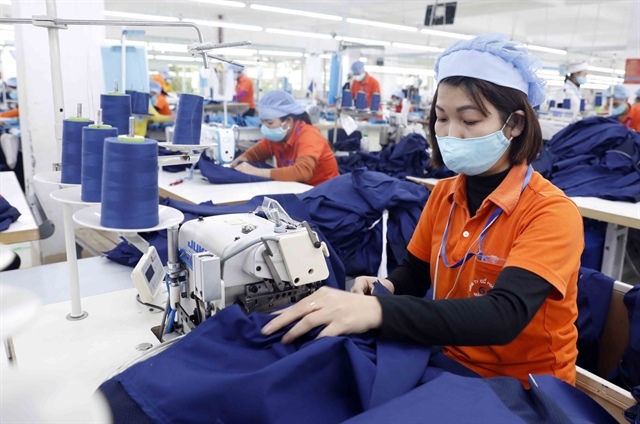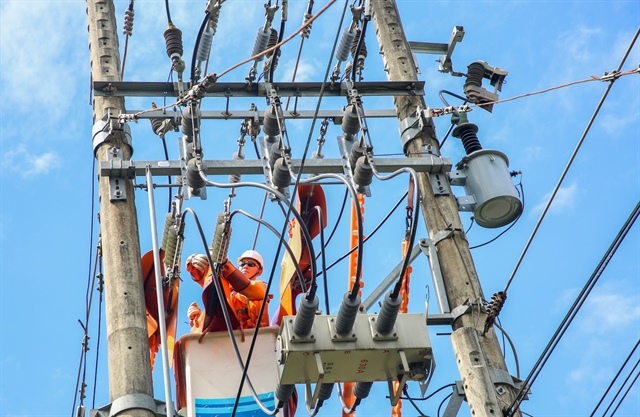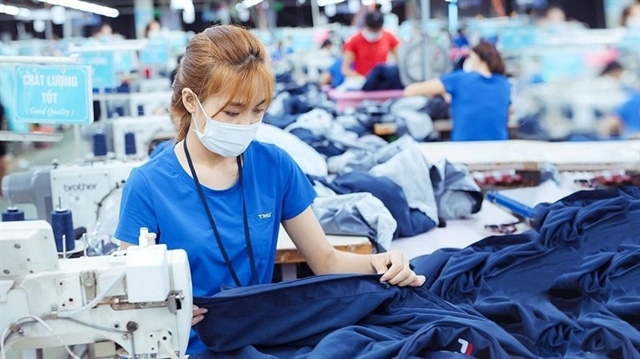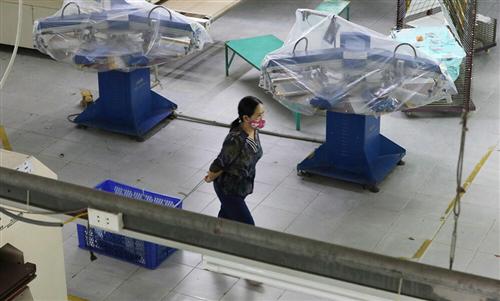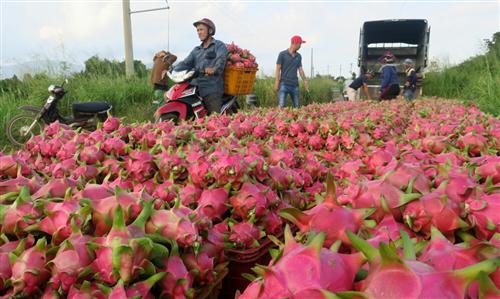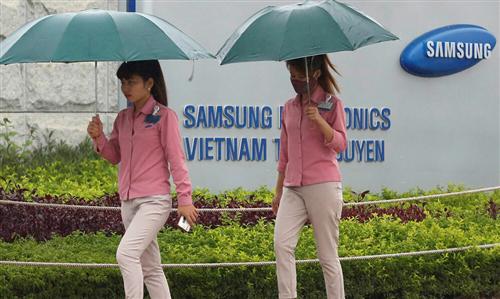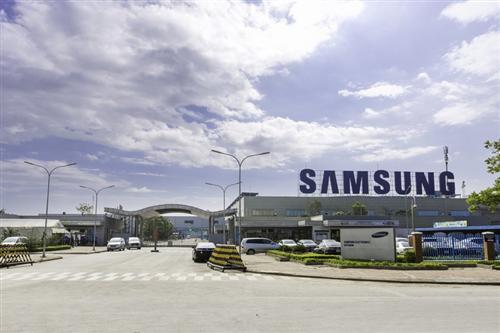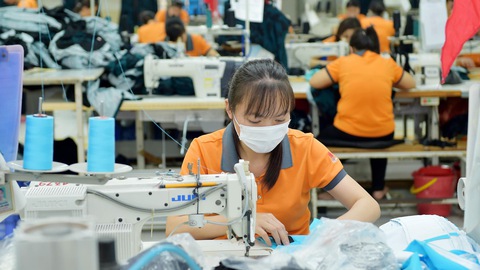Green building materials a cost effective option
Green building materials a cost effective option
It takes considerable commitment to construct a ‘green’ building, from the use of materials, attention to immediate environment and ensuring energy efficiency.
Traditional building materials consume a large amount of resources and create hazardous waste. Certain materials like polymers cannot be recycled easily. A report by the Vietnam Institute for Building Materials says construction works in the country account for around 17 percent of the water used, 40 percent of energy, 25 percent of timber and 40 percent of construction solid waste.
Of later, the demand for sustainable building materials has led to an emerging trend in Vietnam, with hi-tech solutions and smart products replacing traditional construction materials to save materials, energy and become more eco-friendly.
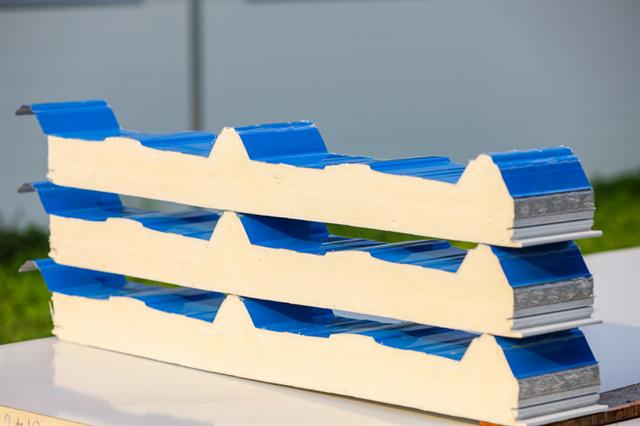
Corrugated galvanised iron, which is fire resistant and insulated, can be used as a substitute for ordinary corrugated iron. Photo by Quynh Tran.
|
Giap Van Thanh, general director of the Phuong Nam Soundproofing Insulating Co., said: "Green building means to create a sustainable and clean living environment. A so-called green building must satisfy many factors, including suitability for that particular soil, climate, weather and light conditions. It should also maximize use of environment-friendly materials."
In fact, before beginning work, builders need to consider environmental factors at the construction site including underground elements, water and air, he added.
Both the building’s design and its construction must clearly seek to protect the environment, connect with the community and adapt to climate change. The construction process needs to minimize the use of natural resources, make use of rainwater and wastewater, conserve groundwater, use natural sunlight and renewable energy, and properly manage garbage. Safety must be a paramount concern in implementing a project.
To obtain the internationally recognized LEED certification of a green building, the construction works must meet a list of criteria like efficient use of water and energy, emit less CO2, make good use of local resources, and minimize energy use in building and operation.
A U.S. Green Building Council report shows there are more than 100,000 buildings with the LEED certification. Of these, 44,000 are in the U.S. and the remaining 56,000 in other countries.
There are only around 100 LEED-certified buildings in Vietnam, emphasizing the lack of investor awareness about green buildings, their importance and the need to protect the environment and ensure sustainability.

The walls of Phuong Nam Co.’s plant are built entirely with insulation panels. Photo by Quynh Tran.
|
Thanh said that one problem with the use of green materials is the high installation cost. Other barriers include limitations with the design team, contractors, investors, and investment capital.
Drawing up on more than 25 years of experience in manufacturing insulation panels for large domestic and international enterprises, Thanh noted that the three main factors that impact a green project are consulting costs, certification costs and additional costs.
Variable costs include those associated with management, material inspection, application of prescribed standards and investor checks on contractor’s daily work outcome. The difference between a project using environment-friendly construction materials and one without them is the former often last longer and are more cost-saving in terms of operation over their lifetime.
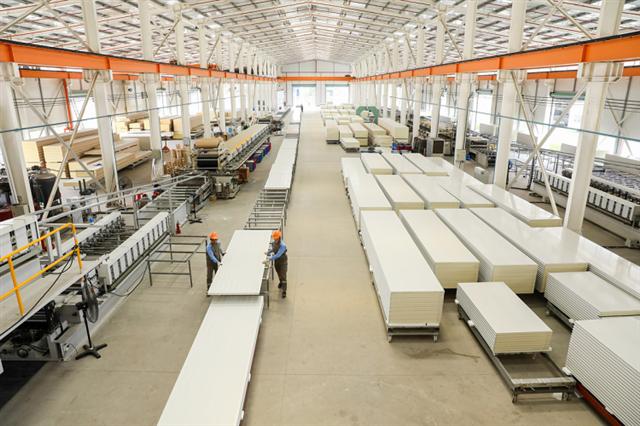
At the Phuong Nam insulating panel factory. Photo by Quynh Tran.
|
Thanh gave the example of building a cold storage facility with temperatures of 0 to minus 10 degrees Celsius. He said that for such a facility, the wall would need to be 400 mm thick if traditional construction materials were used, but Phuong Nam’s Pisocy panels allow a thickness of just 100 mm, leading to significant cost savings. Furthermore, it takes four times the electricity to maintain a temperature of minus 10 degrees Celsius using traditional materials, he added.
A 25,000 sq.m factory built using Phuong Nam’s Pisocy panels can be completed in just three months and can last for up to 30 years.
"Building a production facility or a warehouse using Pisocy panels will cost developers just one fifth of the expenses using traditional construction materials. It can also help save energy in operating the facilities," Thanh said.
Phuong Nam specializes in manufacturing high-class heat-insulating panel products. The company’s main product line is Pisocy, which has a high insulation coefficient of up to minus 50 degrees Celsius, preventing heat loss during operation.
Pisocy meets level B2 fireproofing standards and is heat-resistant for 180 minutes at 300 degrees Celsius.
Thanh said: "This hi-tech material can overcome the weaknesses of traditional construction methods caused by weak foundations and land subsidence. The use of insulation panels helps investors and contractors save construction time, too."



